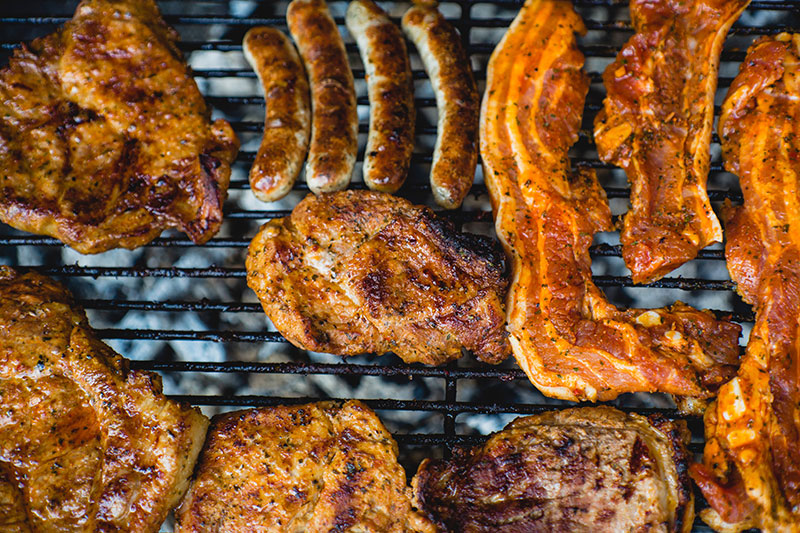The customer service team is always listening, taking notes, and quantifying complaints to ensure our products are continually improved. Due to selling directly to you, the customer, via Amazon, we can use product reviews to help us improve our existing products or help further development of new products.
BBQ History in the USA: A Short Guide
Grills and smokers can be found in backyards throughout our country. And yet, it is easy to overlook the richness of BBQ culture. Far beyond just hamburgers and hot dogs, American barbecue is a proud tradition that predates the founding of the U.S.A.
To get a true sense of this vast tapestry, here’s a brief guide to BBQ history in the U.S.A. Read along to discover:
- How BBQ got its start in the USA
- How BBQ was adapted by arriving colonialists
- How BBQ has evolved over time to become the well-loved tradition that it has become
Table of Contents
BBQ History: The Origin
Like other great cultural developments like jazz, barbecue is the culmination of numerous influences. Modern American, as we know it today, is a combination of Western European and Native American techniques. Over generations, these techniques have been refined by regional specializations.
BBQ can trace its origins back hundreds of years to the Caribbean. Christopher Columbus reported seeing Caribbean natives such as the Taino-Arawak preparing meat over a fire.
Called “barbacoa” by the Native Americans, the technique involved smoking meat instead of directly cooking or roasting it. Later, this concept merged with Western European techniques to become the barbecue that we enjoy today.
Some accounts say the new cooking technique traveled north and arrived in the modern Mississippi area. Here in 1540, explorer Hernando de Soto witnessed a barbecue performed by the Chicksaw tribe.
Meanwhile, other accounts say barbecue was first popularized along the Atlantic Coast. After arriving in New England, this alternate version claims BBQ then spread southward to Virginia, the Carolinas, and eventually to Mississippi in the 1840s.

Popularization of BBQ
BBQ became hugely popular in the U.S.A. after the Civil War. With its high appeal, people quickly used this new food to their advantage.
During the 19th century, barbecue became a formalized social ritual. During the Jackson era, election candidates and public officials hosted numerous barbecues. These events were used to do things like raise money to build a railroad. Each time it was held, a barbecue attracted hundreds to thousands of people.
BBQ would see its next development around the 1920s. At this time, new restaurants equipped with permanent pits began offering it. This was an upgrade from the temporary food stalls in which BBQ previously appeared.
Although it would dominate the market, barbecue suffered a setback in the 50s. At this time, fast food was first introduced. Unable to compete due to its lengthy preparation times, barbecue would languish for years.
Finally, BBQ would make a comeback in the 80s. The traditional cooking style returned to popular demand. This was partly due to the competitive barbecue circuit and the Food Network. Since then, BBQ remains a vital part of American culture.

Regional Differences in BBQ
One of the most interesting things about BBQ culture is the way it has been adapted by different regions. Influenced by things like food availability, these regional specializations flourished into a myriad of flavors and styles. And, with so much variety as a result, we can now truly appreciate these specializations that differ so greatly.
What’s more, these differences can vary greatly, even for small, adjacent areas. For example, although BBQ sauce is traditionally made in North Carolina using a vinegar base. On the other hand, South Carolina’s BBQ sauce is mustard-based due to the influence of early French and German immigrants.
Regional differences extend to each area’s preference for side dishes. In Texas, BBQ diners traditionally eat onions and pickles with their BBQ. At the same time, over in North Carolina, BBQ side dishes typically include coleslaw and hush puppies.

BBQ Pork: The “True” Traditional BBQ
While on the topic of irreconcilable differences, it bears mentioning that some BBQ purists only consider barbecued pork to be “true BBQ.” And although this would disqualify such famous BBQ as Texas brisket and Kentucky mutton, there is a reason behind this thinking.
Early BBQ practitioners in the U.S.A. commonly depended on pigs as their main ingredient. This is because pigs could be freed into the wild when feed was scarce. Because this free-roaming pork tended to be lean, early settlers used BBQ as a way to tenderize the meat.
Today, BBQ devotees all across the country continue to use these techniques.
BBQ History: Final Thoughts
Today, we have the advantage of modern advancements such as cooking thermometers and wireless meat thermometers. As convenient and time-saving as these helpful devices may be, it’s difficult to fully appreciate this rich culture without taking BBQ history into account. So as you fire up your backyard BBQ, let’s remember and acknowledge the efforts of early BBQ pioneers. With its hundreds of years of culture, American BBQ remains one of the best foods in the world!Photo credit: Steve Snodgrass via flickr







